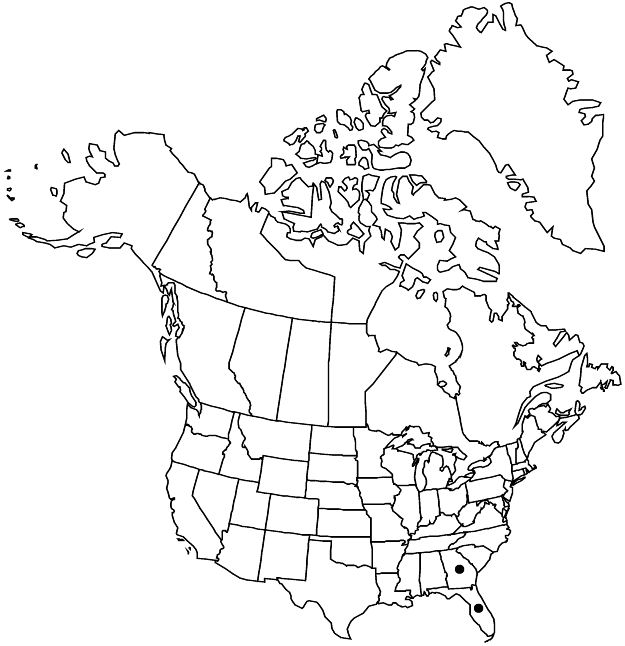Crataegus leonensis
J. Arnold Arbor. 13: 422, fig. 1. 1932.
Trees, 100–120 dm. Stems: trunk bark dark gray to nearly black, thick, ridged; branches broadly spreading, intricate; twigs ± flexuous, new growth olive green, glabrous, 1-year old very dark brown, older gray; thorns on twigs few, straight, 1-year old very dark, older graying, fine, 3.5 cm. Leaves: petiole length 40–50% blade, pubescent in sulcus, densely sessile-glandular; blade narrowly ovate to rhombic-ovate or broadly ovate, sometimes oblong or ± obovate, 2.5–5 cm, ± thin, base cuneate, lobes 0, or 1 or 2 per side, obscure, sinuses shallow, lobe apex obtuse or acute, margins finely to obscurely crenate-serrate, teeth gland-tipped, veins 3 or 4 per side, apex acute, abaxial surface glabrous, adaxial glabrate, main veins sparsely pilose. Inflorescences 3–7-flowered; branches glabrate to moderately pilose; bracteoles caducous, narrowly oblong, margins glandular. Flowers 16–20 mm diam.; hypanthium glabrous; sepals narrowly triangular, margins glandular-serrate; stamens 20, anthers pink to pale purple; styles 2–5. Pomes orange-red to russet, often green-mottled, suborbicular, 9–12 mm diam., glabrous; sepals prominent, ± elevated, spreading; pyrenes (2 or)3 or 4(or 5).
Phenology: Flowering Apr; fruiting Sep–Oct.
Habitat: Sandy upland woods
Elevation: 20–50 m
Discussion
Most specimens of Crataegus leonensis are from Leon County, Florida, but a few come from southern Georgia.
Crataegus leonensis is most similar to C. mira, of which it may prove to be an extreme form; it has smaller flowers and differently shaped, narrower leaves. An unnamed entity from northern Florida and southeastern Alabama to North Carolina, which could key to C. leonensis, is held to be closer to C. annosa. It differs from C. leonensis by larger leaves (3–5 cm) and fruit (12–15 mm), somewhat different leaf shape (broadly elliptic to rhombic, sharply lobed), always dense inflorescence indumentum, and cream anthers. Crataegus subflavida Murrill may be synonymous but has larger yellow pomes.
Selected References
None.
